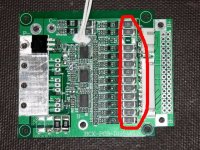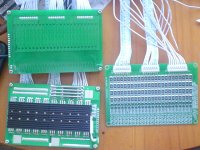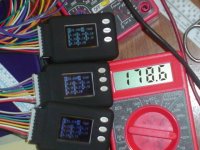joshuahandrich
10 W
- Joined
- Mar 4, 2010
- Messages
- 68
Yes, it makes sense, and it is basically what I was planning other than completely shorting out battery channel one, though that makes sense.
I am positive that Q1 is shorted and none of the others are. It has 0ohms of resistance measured in either direction whereas none of the others exhibit any thing but an open circuit between any of the legs in any direction. Trust me, I know what I'm talking about.
I am positive that Q1 is shorted and none of the others are. It has 0ohms of resistance measured in either direction whereas none of the others exhibit any thing but an open circuit between any of the legs in any direction. Trust me, I know what I'm talking about.




